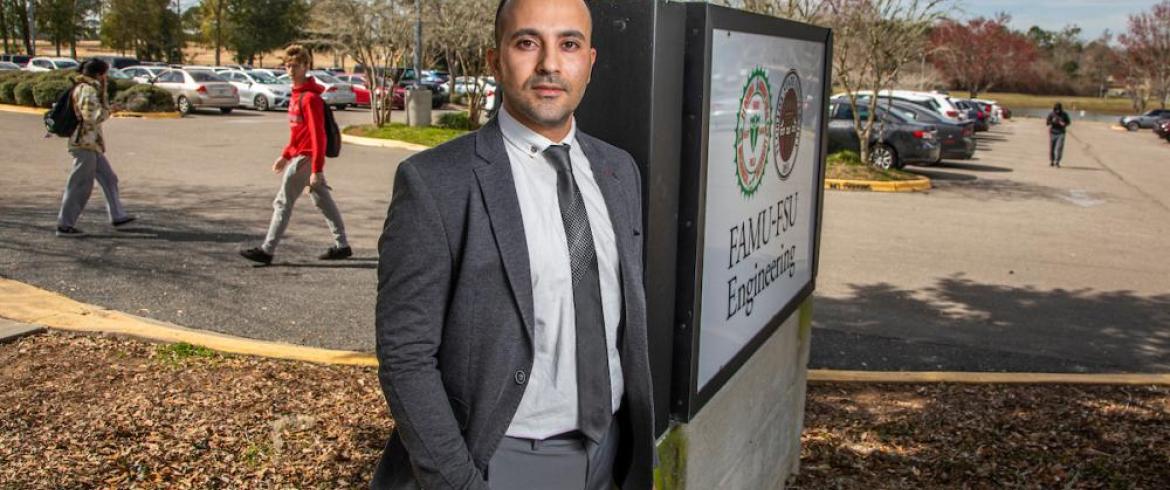
Mohammadreza Koloushani, a graduate research assistant in civil and environmental engineering at the FAMU-FSU College of Engineering and Florida State University is the lead author of a GIS study that may help identify high-risk locations that are prone to accidents involving young drivers. (FAMU-FSU Engineering/M Wallheiser)
In the last thirty years, traffic crashes have been one of the leading causes of fatalities in the United States. The National Center for Health Statistics estimated over 40,698 people died from motor vehicle crashes in the U.S. in 2020. Motor vehicle crashes are the number one cause of death for 16–24-year-old drivers, and researchers want to know why.
Mohammadreza Koloushani, a graduate research assistant in civil and environmental engineering at the FAMU-FSU College of Engineering and Florida State University, is the lead author on a new study that employs a Geographic Information Systems (GIS)-based methodology. The system may help identify high-risk locations that are prone to accidents involving young drivers. It can also evaluate how well safety countermeasures reduce young-driver fatalities. The researcher is working with a group from the college to understand the patterns of young drivers.
“We know that risky behavior, inexperience, greater inattentiveness are factors that contribute crashes involving young adults,” Koloushani said. “However, we want to look deeper and pinpoint high-risk locations where crashes may occur. We hope to develop strategies in these areas that may save lives.”
The GIS mapping system the researchers are using helps illustrate spatial patterns of young-driver crashes, which can reveal where crashes are likely to occur. Koloushani and his colleagues use spatial patterns to predict how the drivers may behave over time.
Their work was published in the journal of Sustainability.
“In our study, we are investigating this issue at several Florida university campuses,” Koloushani said. “We hope to assess the effectiveness of existing safety countermeasures on campus and advise new strategies to target the youth population.”
The findings of the initial spatial analysis indicated there are a high number of young-driver involved crashes in the vicinity of the universities. These crash hotspots appear to be different than those for other age groups. Intersections are the most problematic for the population, and the researchers found that decreasing the speed limit around universities did not necessarily decrease the probability of young-driver crash occurrence.
“We found that young drivers between the ages of 16 and 24 have a noticeable potential of being distracted during driving,” Koloushani said. “Lowering the speed limit is already being used but we hope additional strategies to improve safety and prevent young-driver involved crashes will also be considered.”
Eren Ozguven is an associate professor in civil and environmental engineering, a researcher with the team, and the doctoral supervisor of Mohammadreza. He is also the director of the Resilient Infrastructure and Disaster Response Center (RIDER) at the college. The center leverages technology, data and multidisciplinary research with community needs.
Ozguven said, “The study we are working on is part of a larger initiative at the college to use statistical modeling to help solve issues in local communities. We have numerous experts at the center who provide scientific solutions for everything from disaster relief to community planning.”
Other co-authors of the study include Mahyar Ghorbanzadeh from HNTB, Mehmet Baran Ulak from University of Twente, Mark W. Horner from the FSU Department of Geography, and Omer Arda Vanli from the FAMU-FSU College of Engineering Department of Industrial and Manufacturing Engineering.
